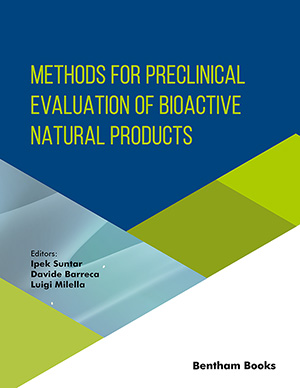Abstract
Background: This study aims to develop a new hepatoprotective drug from common plants and vitamins that are potent, nontoxic, and cost-effective. The literature search found that Curcuma longa , Zingiber officinale, Terminalia, chebula, and Vitamin A (Vitamin C + Vitamin E) provide hepatoprotective action against drugs-induced hepatotoxicity. A major side effect of antitubercular drugs (ATD) is liver toxicity, which reduces their effectiveness.
Aim: In this study, Vitamins and Phytoconstituents (Combined extract) were evaluated for their potential hepatoprotective effects against hepatotoxicity induced by antitubercular drugs in Wistar albino rats of either sex.
Materials and Methods: In the study, ethanolic extract of rhizomes of Curcuma longa and Zingiber officinale , fruits of Terminalia chebula , and vitamins C and E were used. As a standard drug, silymarin was also used. For 30 days, albino rats received 7.5 mg/kg isoniazid, 10 mg/kg rifampicin, and 35 mg/kg pyrazinamide orally as a suspension in distilled water.
Result: A combined extract plus vitamins (500mg/kg) treatment significantly reduced the hepatic toxicity caused by antitubercular drugs (P<0.05-P<0.001). A combination of extracts + vitamins (500mg/kg) eliminates hepatotoxicity, and the results are close to those of Silymarin, a standard drug.
Conclusion: As a result of this study, extracts+vitamins provide protection against liver injury attributed to their hepatoprotective activity, which supports their traditional use.
Keywords: Curcuma longa extract, Zingiber officinale extract, Terminalia chebula extract, vitamins, isoniazid, rifampin, pyrazinamide, liver enzymes.
[http://dx.doi.org/10.7326/0003-4819-137-12-200212170-00007] [PMID: 12484709]
[http://dx.doi.org/10.1136/gut.44.5.731] [PMID: 10205214]
[PMID: 24790736]
[http://dx.doi.org/10.1016/S2221-1691(12)60075-6] [PMID: 23569949]
[http://dx.doi.org/10.1089/10966200260398206] [PMID: 12495589]
[http://dx.doi.org/10.1002/ptr.1631] [PMID: 15934014]
[http://dx.doi.org/10.1093/clinchem/15.6.487] [PMID: 5786804]
[http://dx.doi.org/10.1093/clinchem/20.4.447] [PMID: 4818198]
[http://dx.doi.org/10.1016/0006-291X(87)91297-6] [PMID: 3593335]
[http://dx.doi.org/10.1111/j.1432-1033.1974.tb03714.x] [PMID: 4215654]
[http://dx.doi.org/10.1016/0003-2697(72)90132-7] [PMID: 4556490]
[http://dx.doi.org/10.1016/S0021-9258(19)42083-8] [PMID: 4436300]
[http://dx.doi.org/10.1164/rccm.2108091] [PMID: 12359646]
[PMID: 16679670]
[http://dx.doi.org/10.1016/j.jceh.2012.12.001] [PMID: 25755470]
[http://dx.doi.org/10.1128/AAC.01866-12] [PMID: 23357778]
[http://dx.doi.org/10.5455/2319-2003.ijbcp20131211]
[PMID: 1593209]
[http://dx.doi.org/10.1016/j.jaim.2016.10.005] [PMID: 27916487]
[http://dx.doi.org/10.1191/0960327106ht601oa] [PMID: 16634329]
[http://dx.doi.org/10.3748/wjg.v13.i23.3199] [PMID: 17589898]
[http://dx.doi.org/10.7897/2230-8407.0910235]
[http://dx.doi.org/10.1194/jlr.M300146-JLR200] [PMID: 12867540]






























